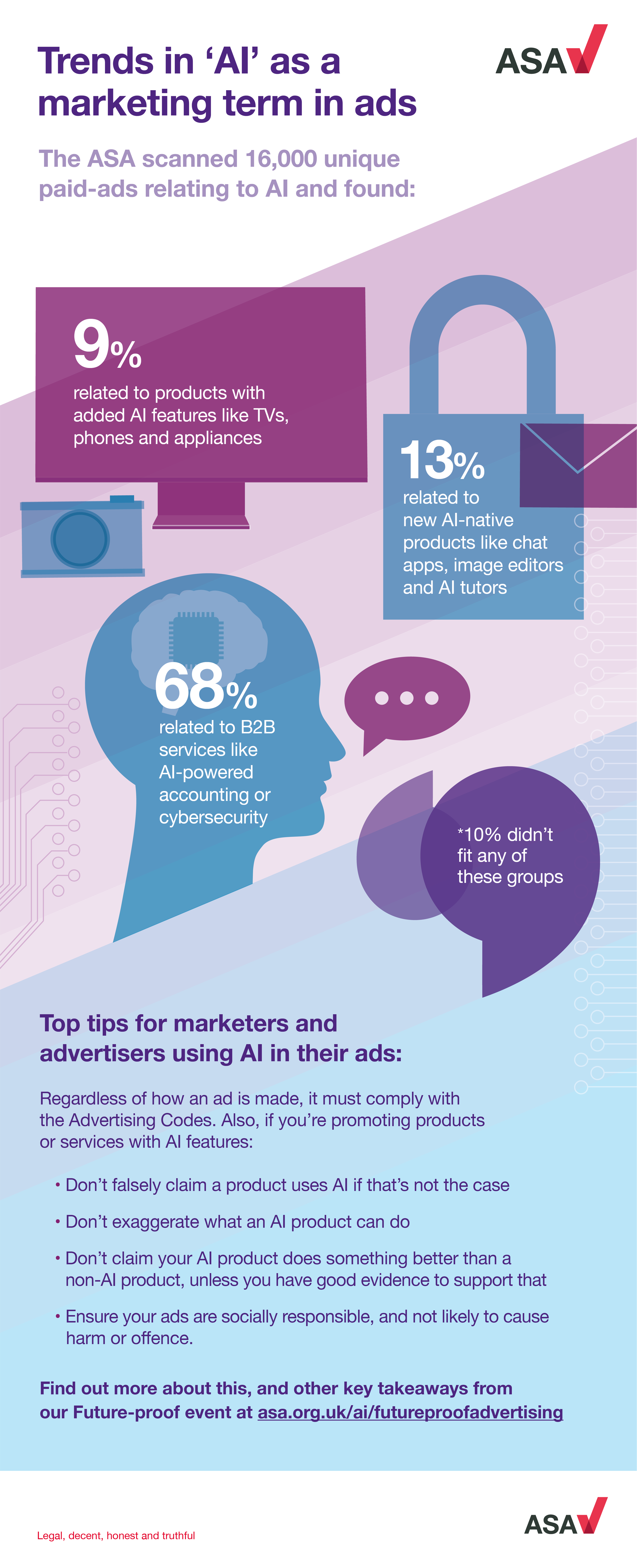
AI at work in advertising ad regulation
By 2028, AI will continue transforming industries like advertising, healthcare, and transportation. Generative AI, which automates creative tasks and can reimagine conventional distribution models will marry with conversational AI, enabling human-like interaction to shape our digital experiences. However, challenges related to ethical usage and regulation will require ongoing attention from governments and industry leaders alike.
At the ASA we’re committed to using technology to deliver more effective, responsive regulation. Since 2021, we’ve been investing in our data science capabilities and building a team to help us take on the specific challenges of regulating online advertising.
The ASA is already a proactive regulator. Our expert teams are constantly trying to understand emerging issues and monitor compliance with the rules. The scale of online advertising makes this challenging and resource intensive. The Active Ad Monitoring system our Data Science team has built sorts through big volumes of ads, delivering intelligence to experts across the ASA and allowing them to do their jobs more quickly and efficiently.
Active Ad Monitoring
The Active Ad Monitoring system is made up of three components:
- Ad capture at scale – The system captures ads from social media, search and display using a mix of public sources, our own internal monitoring tools and proprietary datasets
- AI-based filtering – Machine learning models are configured to spot the ads that are most likely to be relevant to a given issue, or to have specific compliance problems
- Expert review – Our experts can browse and search content related to their work via a web interface that allows them to quickly assess issues, and identify problematic examples for action
Developing the capabilities of the system is an ongoing project. At the moment it only covers a subset of the issues the ASA is working on. But it is already making an impact in high-priority areas, and currently processes more than 100,000 ads each month.
For example, in 2021/2022, the ASA laid out rules for advertising cryptocurrency services, including requiring risk warnings and clarifying that ads shouldn’t do things like encourage people to invest with credit. As always, we worked with others to develop and implement those rules: the FCA, advertisers and other industry partners. But we also needed to monitor compliance and act quickly when non-compliant ads appeared.
In the past, we would have relied on limited, labour-intensive manual searches and complaints from the public to stay on top of any non-compliant ads. Today, we use our Active Ad Monitoring system. After capturing ads by relevant advertisers from a range of social media platforms, the system applies machine learning algorithms to identify and flag likely non-compliant ads, for our experts to review and act on.
Human scale response
Each week the Compliance team is presented with an organised list of any ads that the Active Ad Monitoring system has identified as likely to break the rules, with explanations of the issues found. This has enabled us to act quickly, taking follow-up action with advertisers to secure compliance, and working closely with platforms to take down ads where necessary. Overall, the ASA's work, assisted by our Active Ad Monitoring system has already led to hundreds of ads being either amended or withdrawn.
At the ASA we are not just investing in AI, we are committed to creating and deploying real-world applications that lead to fewer non-compliant ads. We are, therefore, continuing to rapidly develop our Active Ad Monitoring system, making it an even more core part of the way we regulate.

Click here to read our most recent report on the use of AI as a marketing term.




